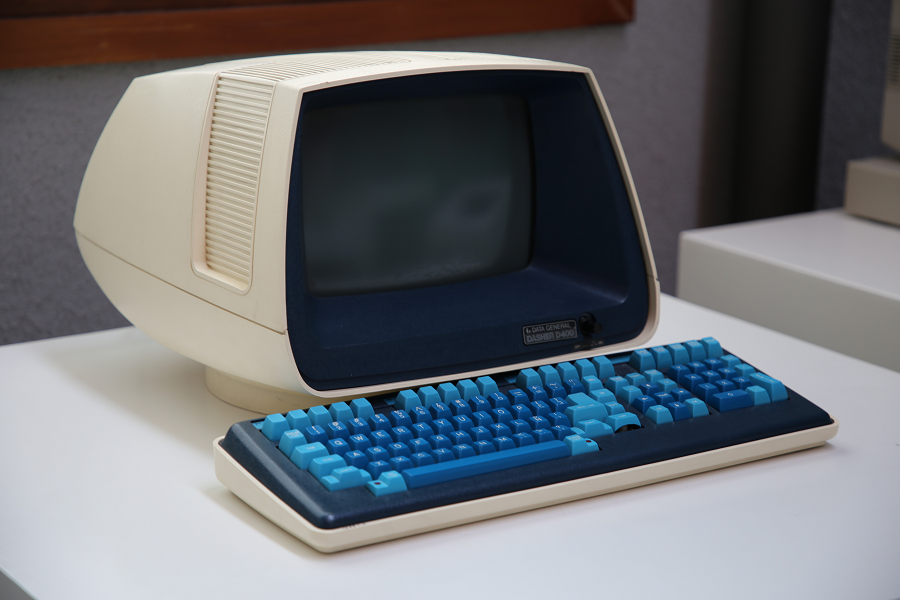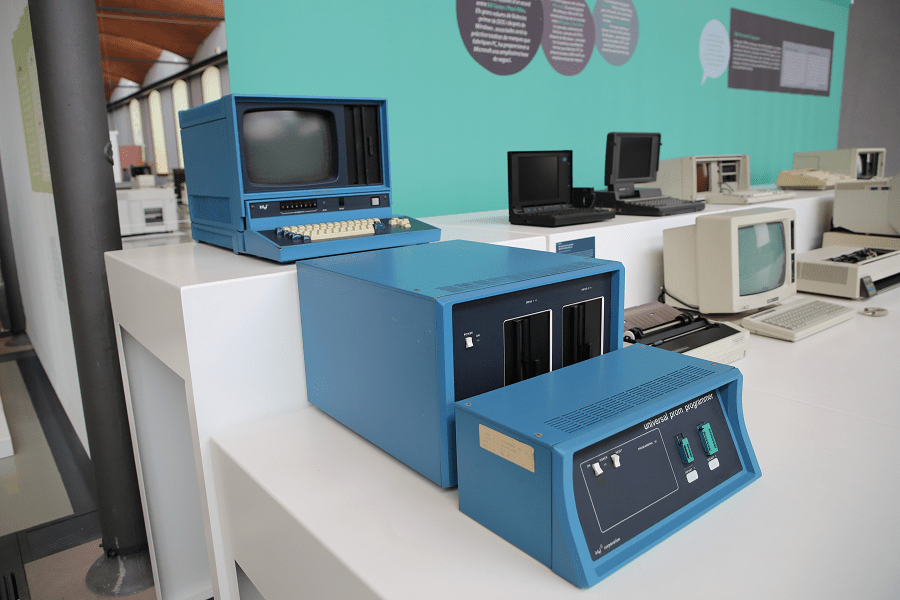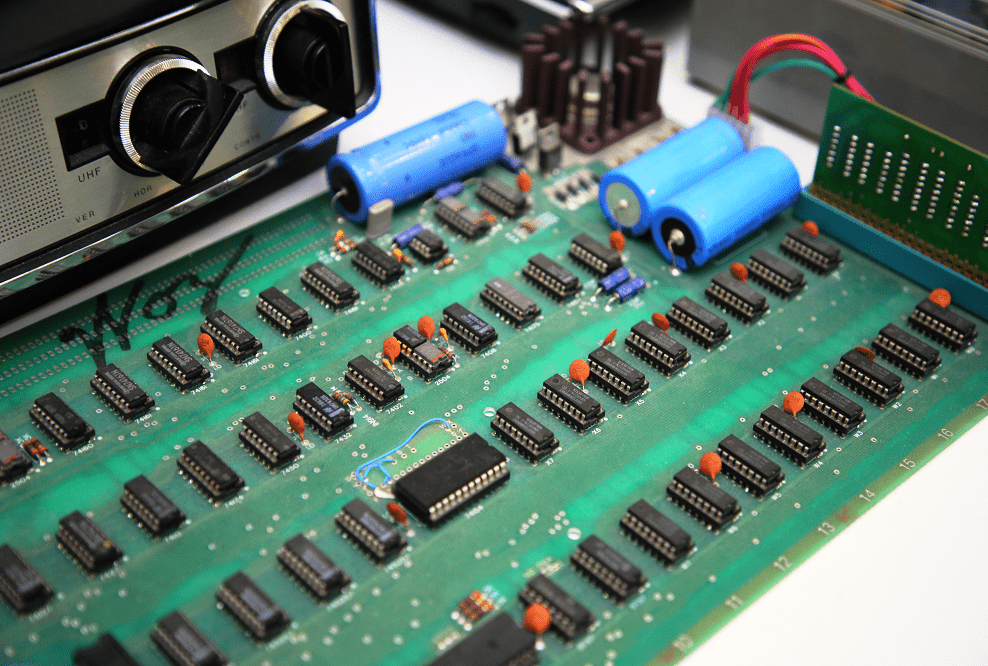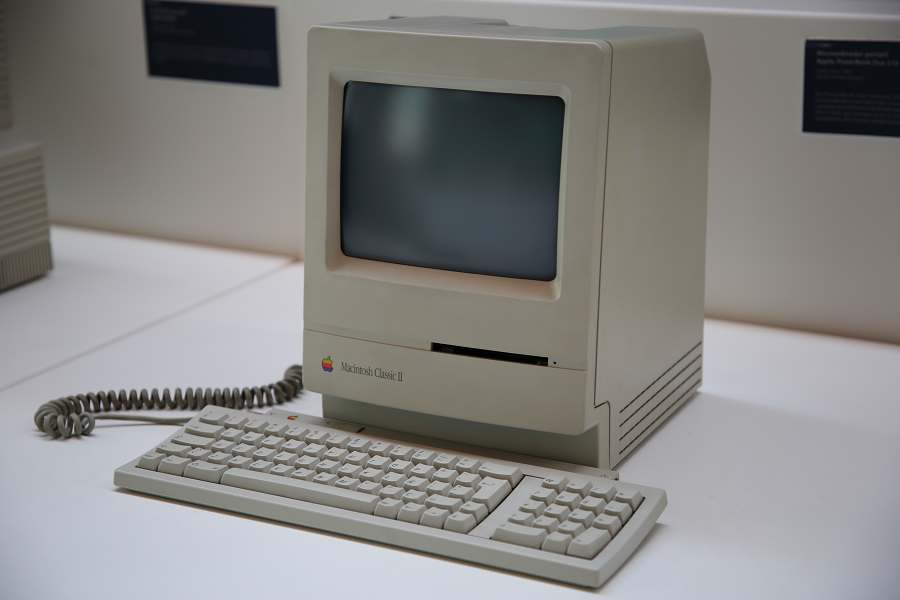Data General Dasher D400. Made in 1980
Data General produced a full range of peripherals, sometimes by rebadging printers for example, but Data General’s own series of CRT-based and hard-copy terminals were high quality and featured a generous number of function keys, each with the ability to send different codes, with any combination of control and shift keys, which influenced WordPerfect design. The model 6053 Dasher 2 featured an easily tilted screen, but used many integrated circuits; the smaller, lighter D100, D200 and eventually the D210 replaced it as the basic user terminal, while graphics models such as the D400 and D460 (with ANSI X3.64 compatibility) occupied the very high end of the range. Terminal emulators for the D2/D3/D100/D200/D210 (and some features of the D450/460) do exist, including the Freeware 1993 DOS program in D460.zip.
Most Data General software was written specifically for their own terminals (or the terminal emulation built into the Desktop Generation DG10, but the Data General One built-in terminal emulator is not often suitable), although software using Data General Business BASIC could be more flexible in terminal handling, because logging into a Business BASIC system would initiate a process whereby the terminal type would (usually) be auto-detected.
Data General Corporation was one of the first minicomputer firms of the late 1960s. Three of the four founders were former employees of Digital Equipment Corporation (DEC).
Their first product, 1969’s Data General Nova, was a 16-bit minicomputer intended to both outperform and cost less than the equivalent from DEC, the 12-bit PDP-8. A basic Nova system cost two-thirds or less than a similar PDP-8 while running faster, offering easy expandability, being significantly smaller, and proving more reliable in the field. Combined with Data General RDOS (DG/RDOS) and programming languages like Data General Business Basic, Novas provided a multi-user platform far ahead of many contemporary systems. A series of updated Nova machines were released through the early 1970s that kept the Nova line at the front of the 16-bit mini world.
The Nova was followed by the Eclipse series which offered much larger memory capacity while still being able to run Nova code without modification. The Eclipse launch was marred by production problems and it was some time before it was a reliable replacement for the tens of thousands of Novas in the market. As the mini world moved from 16-bit to 32, DG introduced the Data General Eclipse MV/8000, whose development was extensively documented in the popular book, The Soul of a New Machine. Although DG’s computers were successful, the introduction of the IBM PC in 1981 marked the beginning of the end for minicomputers, and by the end of the decade, the entire market had largely disappeared. The introduction of the Data General/One in 1984 did nothing to stop the erosion.
In a major business pivot, in 1989 DG released the AViiON series of scalable Unix systems which spanned from desktop workstations to departmental servers. This scalability was managed through the use of NUMA, allowing a number of commodity processors to work together in a single system. Following AViiON was the CLARiiON series of network-attached storage systems which became a major product line in the later 1990s. This led to a purchase by EMC, the major vendor in the storage space at that time. EMC shut down all of DG’s lines except for CLARiiON, which continued sales until 2012.











